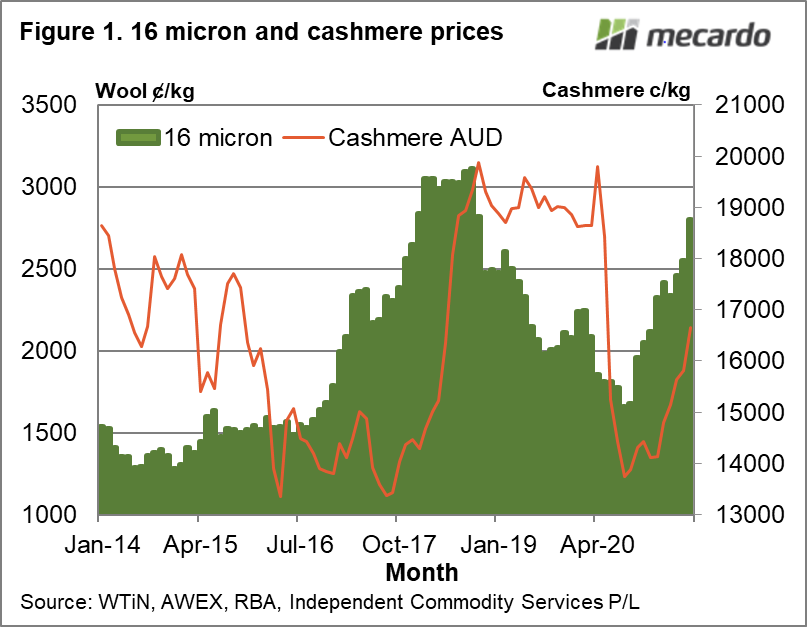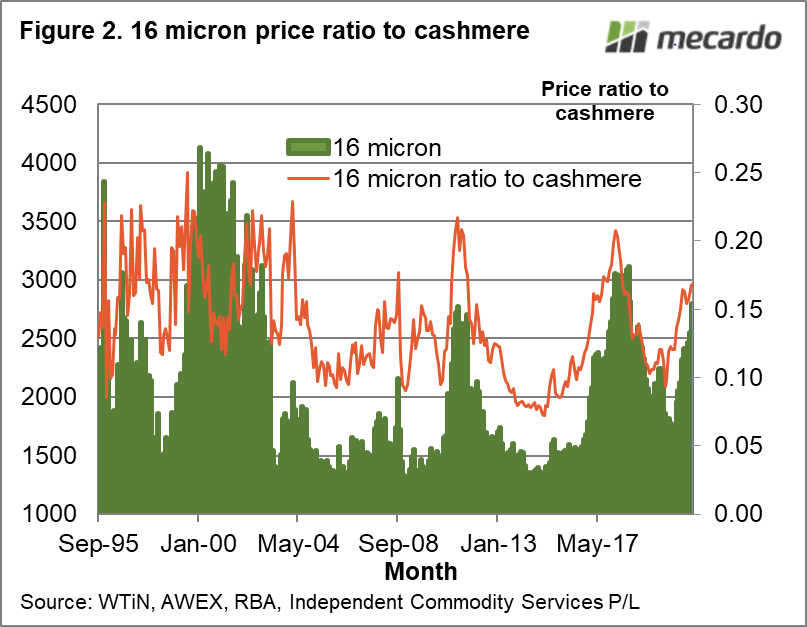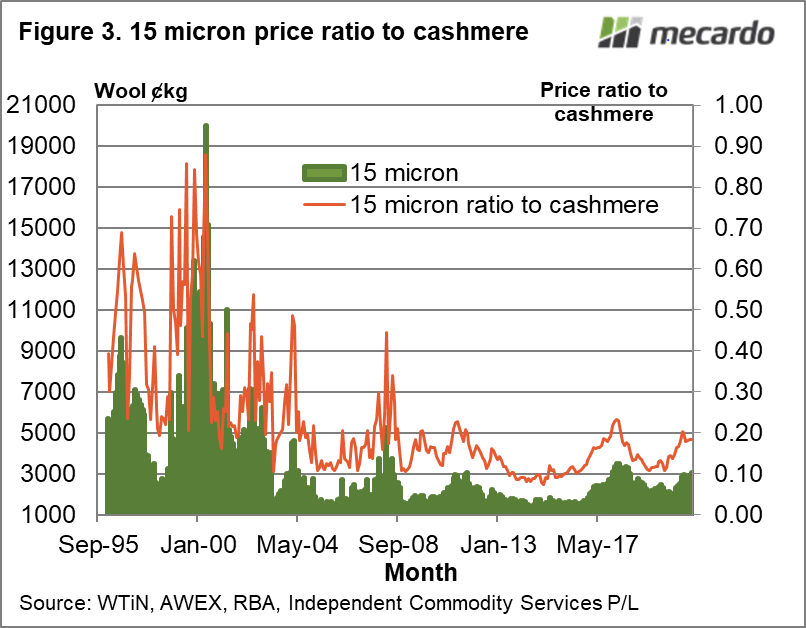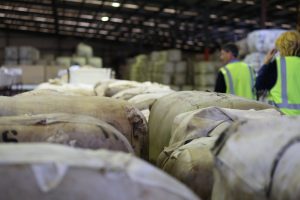Mecardo looked at fine merino and cashmere prices in April, concluding fine merino prices were in the middle of their range in relation to cashmere prices (neither cheap nor expensive) with room to rise. In light of the strong fine merino market this article checks out how fine merino prices are travelling in relation to cashmere prices.
The cashmere market is not overly transparent especially for supply, which is highly seasonal with cashmere delivered to merchants during the northern hemisphere spring, as the goats moult, from the steppes of central Asia. The International Wool Trade Organisation (IWTO), estimated that last season’s cashmere production was 25,000 greasy tonnes, down from 29,000 tonnes in 2016 and 2017. The 25,000 tonnes greasy translates roughly to around 9,000 tonnes of fibre, compared to the 6,500 clean tonnes of 16 micron wool sold in Australia during the past 12 months.
Since the April article, when the cashmere buying season was just beginning, cashmere quotes have lifted by 7% in Australian dollar terms which has helped maintain fine merino price relativities at affordable levels.
Figure 1 shows a monthly price series for 16-micron wool (combing fleece) and for a cashmere series from the World Textile Information Network, which is the descendant of the old Bradford Wool report. The graph shows prices from early 2014 through to this month. Both cashmere and the 16-micron prices have trended higher since hitting pandemic induced lows in mid-2020. While the 16-micron price is within cooee of its 2018 highs the cashmere price has only retraced around half of its fall, although it must be kept in mind the cashmere market is not transparent as the Australian merino market is.
In April the 16-micron price was in the middle of its trading range with cashmere, which ranges from 10% of the cashmere price to 20%. Since April the 16-micron quote has risen by 14%, outpacing the 7% lift in the cashmere price so that the 16-micron to cashmere price ratio has lifted to 17%. The good news is that this leaves further room for the wool to cashmere price ratio to lift. In 2011 and 2018 the ratio reached 20-22%. There is no guarantee that this will be repeated but if it did, and the cashmere price held at current levels, the 16-micron price would lift by 500 cents.
Figure 2 repeats Figure 1, substituting 15-micron for 16-micron. The upper range of the 15 to cashmere price ratio is not has clear as it is for 16-micron. In recent cycles (in 2011 and 2018) the ratio has reached 23%. It is currently sitting at 18% so for the 15-micron price there is also upside in relation to cashmere prices.
What does it mean?
Falling supply in absolute terms and relative to the supply of major fibres such as cotton, have been correlated with increased wool price ratios to these other fibres. With the prices for cotton and PSF flat lining, the increased price ratios have shown up as a rising trend in price in recent decades. While the trend is positive wool does have the loosest relationship of the three fibres shown with its trend, so prices tend to be more volatile as we have seen in recent years on both the upside and now the downside.
Have any questions or comments?
Key Points
- Both the 15 and 16 micron merino prices have room to rise in relation to cashmere before reaching previous cyclical upper limits.
- Cashmere prices have been rising since mid-2020, after reaching a pandemic low like the apparel fibre markets generally.
- Rising cashmere prices help to keep the higher merino prices competitive.
Click on figure to expand
Click on figure to expand
Click on figure to expand
Data sources: WTiN, AWEX, RBA, IWTO, ICS















